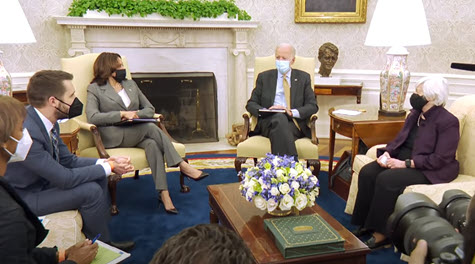
Officials from the Fed and other top federal financial regulatory agencies testified on April 15 before a House Financial Services subcommittee that they support federal legislation to transition away from using the London Interbank Offered Rate (Libor) as an interest rate benchmark for US dollar contracts. (Subcommittee hearing video and background memorandum)
Libor Deadlines
- Libor is currently used in many outstanding financial contracts – including mortgages, student loans and derivatives – worth trillions of dollars.
- Using LIBOR for new contracts is scheduled to end at the end of 2021. Additionally, all Libor maturities will stop in June 2023, although some will cease at the beginning of next year.
- Rep. Brad Sherman (D-CA), photo above – who chairs the House Financial Services Subcommittee on Investor Protection, Entrepreneurship, and Capital Markets that held the hearing – has circulated draft legislation of a proposal entitled the Adjustable Interest Rate (LIBOR) Act of 2021 to smooth the transition away from Libor to the Secured Overnight Financing Rate (SOFR). (Pensions & Investments, April 16)
- Lawmakers from both parties also voiced their support for federal Libor legislation during the hearing. Sherman stated that the need for federal action on Libor would test Congress to see if it can pass “necessary legislation that isn’t Democrat, isn’t Republican.” (CQ, April 15)
Roundtable Support

- The Real Estate Roundtable and 17 national trade organizations on April 14 sent a letter of support for federal Libor legislation to leadership of the House Financial Services Committee.
- The letter notes that the trillions of dollars of outstanding contracts, securities, and loans that use LIBOR for their interest rates do not have appropriate contractual language to address a permanent cessation of LIBOR.
- The coalition states in their letter that “Ineffective or ambiguous fallback provisions will result in uncertainty, litigation, and harm to consumers, businesses, and investors. Only federal legislation can uniformly address all 50 states, and only federal legislation can address issues such as the need for narrow relief from certain federal laws.”
- On April 6, 2021, New York Governor Andrew Cuomo signed the first state-passed legislation (Senate Bill 297B/Assembly Bill 164B) intended to reduce risks associated with the transition away from LIBOR. Since New York law governs many of the financial products and agreements referencing LIBOR, the legislation will provide legal clarity for these contracts and will lessen the burden on New York courts. (Pensions & Investments, March 25)
The American College of Real Estate Lawyers recently published a detailed overview of the Libor transition – “LIBOR’S Endgame: a Brief Pause, Not a Reprieve; a Safe Harbor, but a New Penalty” – by Joe Forte (Senior Legal Councel, AmTrust Title), who is a member of The Roundtable’s Real Estate Capital Policy Advisory Committee (RECPAC).
# # #




















